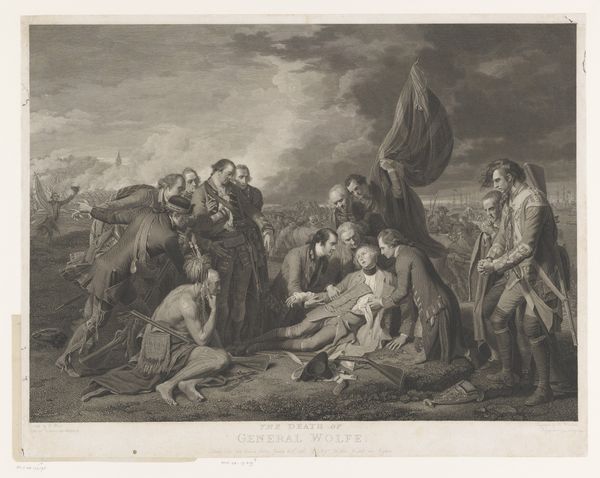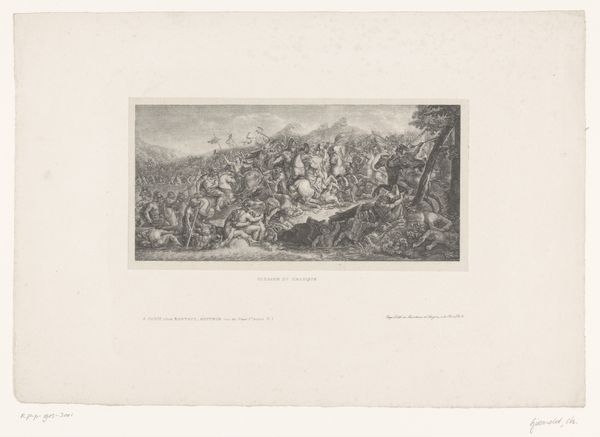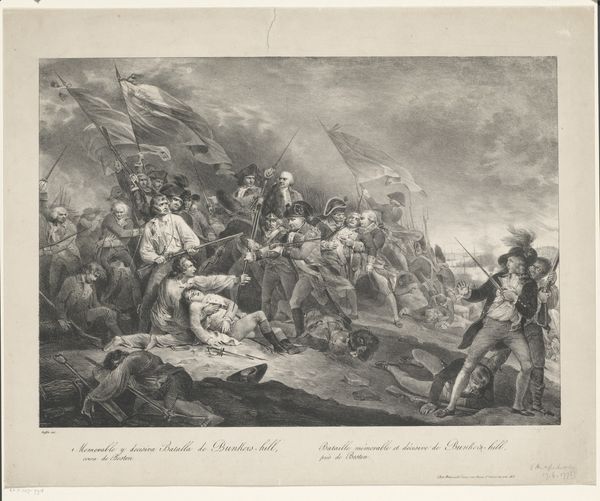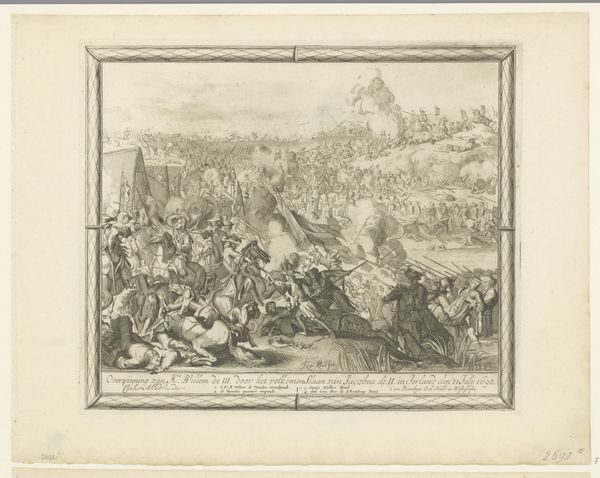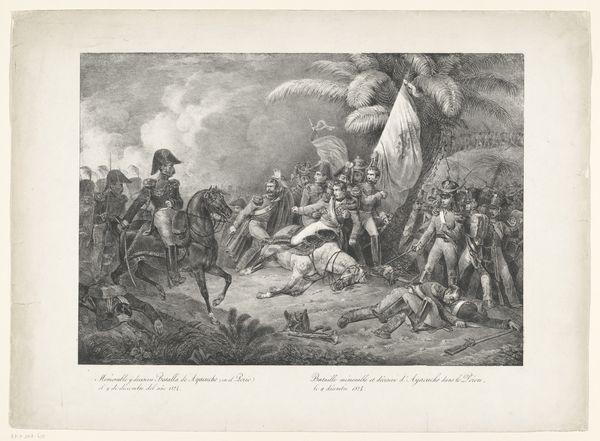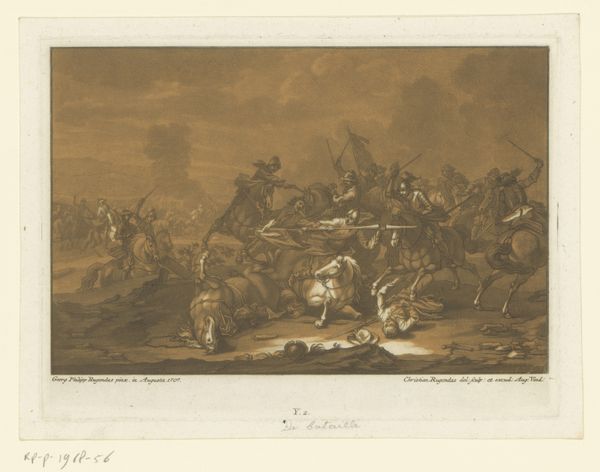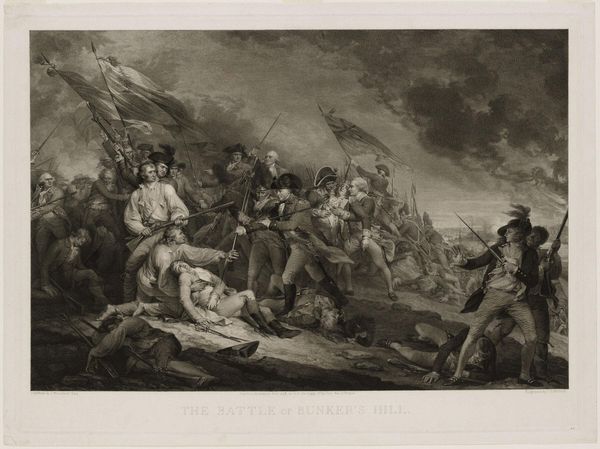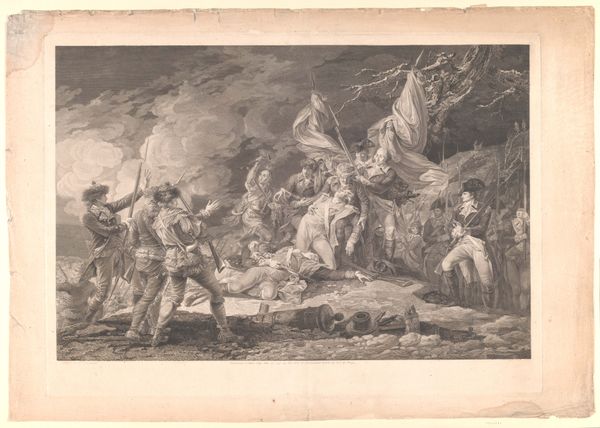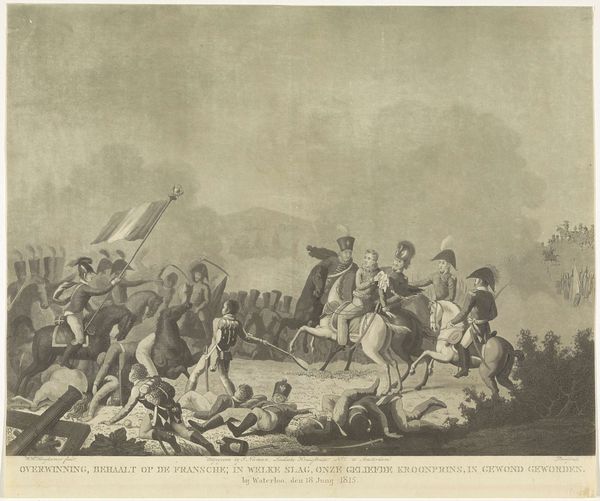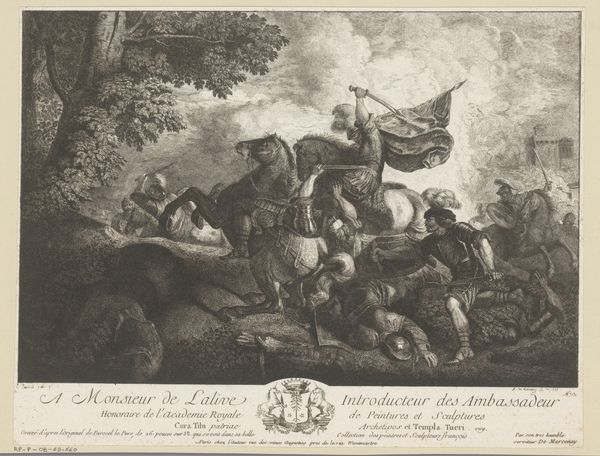
#
pencil drawn
#
aged paper
#
toned paper
#
light pencil work
#
photo restoration
#
pencil sketch
#
charcoal drawing
#
pencil drawing
#
pencil work
#
watercolor
Dimensions: height 466 mm, width 692 mm
Copyright: Rijks Museum: Open Domain
Curator: Welcome. Here we see Heinrich Jan Penningh’s rendition of "The Heroic Death of Christoph Schwerin at the Battle of Prague," likely completed between 1792 and 1805. Editor: My initial reaction is one of muted chaos. The limited palette, a kind of sepia wash, speaks of both age and the dust of battle, yet there's an energy in the composition. It seems crowded, and tragic. Curator: Yes, Penningh's choice to render this scene primarily in pencil and perhaps some watercolor wash really directs our eyes to the central figures and their arrangement. Look closely; the artist contrasts Schwerin's lifeless repose with the dynamic gestures of the still-fighting soldiers. Note the subtle use of line weight to create depth. Editor: I'm drawn to the performative aspects here. The raised arms, the slumped bodies – they read as both a glorification of war and a lament. It begs the question, who benefits from the spectacle of sacrifice and devastation depicted? It seems complicit in perpetuating militaristic narratives. Curator: Indeed, and notice how the formal pyramidal structure, with Schwerin at its base, lends a classical air to the composition. This evokes historical battle painting traditions, placing this event within a grand narrative of heroism, though, you rightly point out the complexity inherent. Editor: Considering this piece emerged in the context of the late 18th-early 19th century’s tumultuous political shifts, Penningh’s artistic choices might highlight how narratives are weaponized during conflicts, solidifying identities. The work captures violence as part of statecraft. Curator: His artistic choices also speak to an exploration of Neoclassical ideals concerning war's noble sacrifices within the context of printmaking which would make images like this accessible. Editor: Ultimately, Penningh delivers a grim narrative – death contrasted with noble cause. As we consider those left in war's wake, we must resist romanticising narratives that excuse war. Curator: Precisely; Penningh has left us with potent juxtapositions to study carefully through form and historical meaning.
Comments
No comments
Be the first to comment and join the conversation on the ultimate creative platform.
